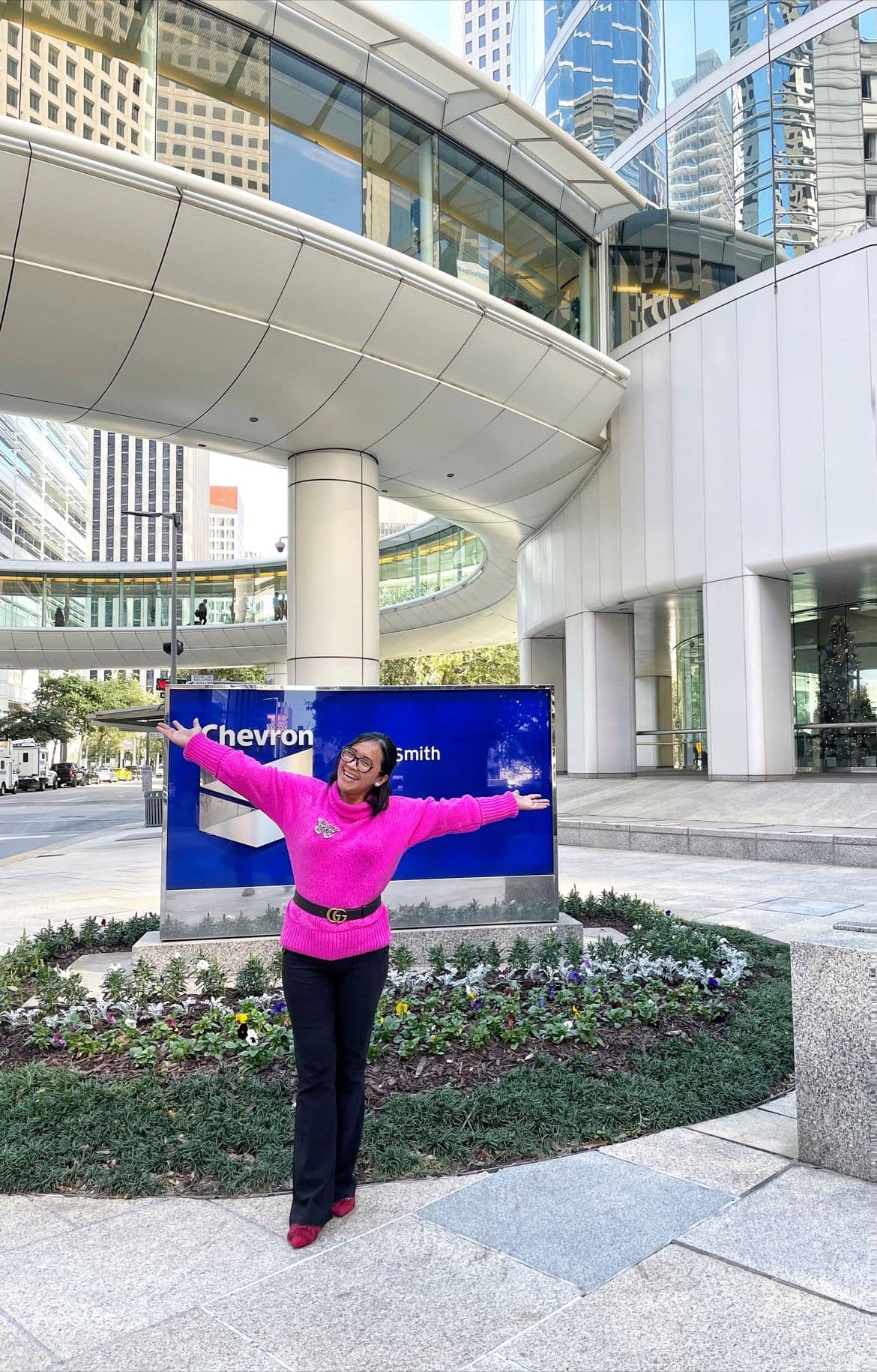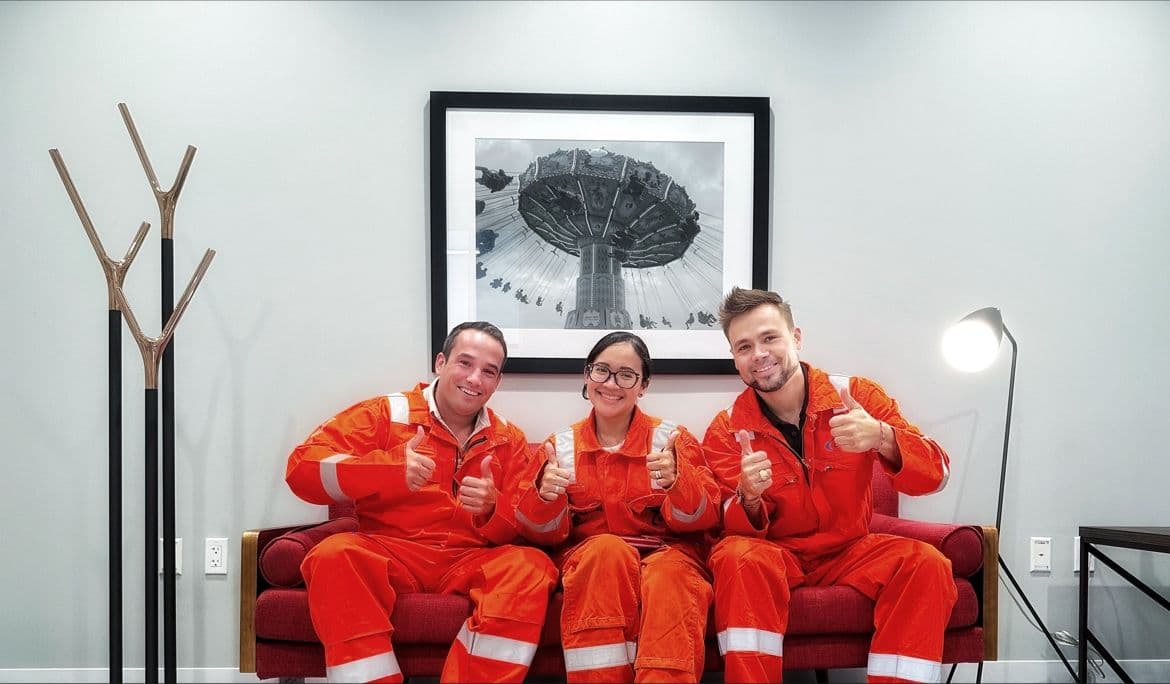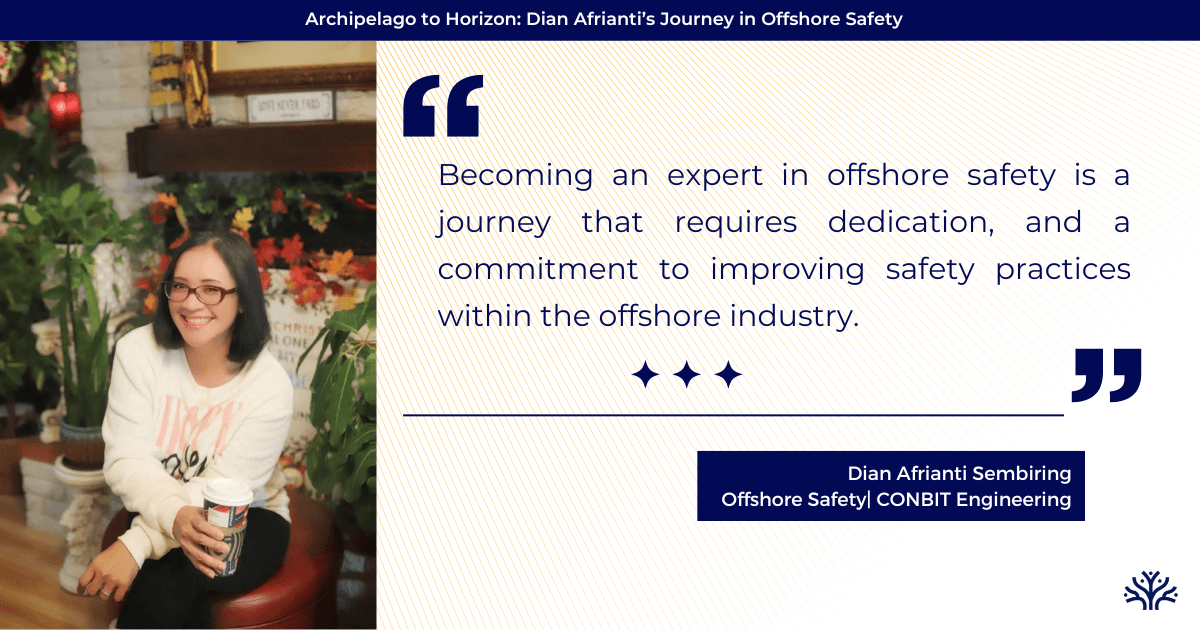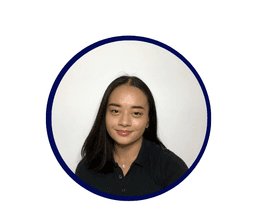Introduction
In the aftermath of the Deepwater Horizon disaster in 2010, the Bureau of Safety and Environmental Enforcement (BSEE) emerged, marking a pivotal moment in offshore safety regulation. A comprehensive report from 2012 to 2020 highlighted a global landscape marred by 4,474 incidents, resulting in 1,654 injuries and 23 fatalities offshore. Notably, APAC faced its share of offshore challenges, with incidents like the Dayang Topaz incident in 2020 and the Pablo tanker explosion in 2023.
Amidst the backdrop of these global safety concerns, individuals like Dian Afrianti stand as a beacon of expertise for safety in offshore operations. With over 15 years of experience in the oil and gas industry in offshore operations, Dian Afrianti carries an impressive portfolio on her sleeve, alongside an immense belief in the implementation of safety measures for offshore engineers. From being the first woman in Indonesia to become a Subject Matter Expert in Lifting Operations to migrating to the USA for career growth, Dian has a lot to share.
During our interview, we learned that Dian is a woman of many talents. She isn’t just an offshore engineer – she is also a businesswoman and an author. After migrating to the USA, she decided to start a business to support her family while waiting for her green card; this is where her company, FDP Consulting, comes in. She also works as a Business Development Manager at CONBIT Engineering, a company that focuses on and specializes in Offshore Lifting Operations.
 Dian visiting her former company, Chevron.
Dian visiting her former company, Chevron.- Making “Zero Accidents” is a powerful mission. What inspired you to become an advocate for safety in offshore operations?
Being family-oriented, I want to make sure people who go offshore can come home to their families safely - as they should. This drives my strong commitment to protecting people's lives, the environment, and the industry's reputation.
2. In your extensive experience, what are some of the most challenging aspects of maintaining safety standards in lifting operations, and how have you successfully overcome these challenges?
Most times, it is project constraints. While balancing safety is of utmost importance, having to meet project deadlines and cost considerations is definitely a challenge, as shortcuts may be taken to save time and money.
In order to successfully balance safety with project constraints, Dian noted the importance of organisations prioritising skills such as comprehensive planning, resource allocation, training, technology use, continuous monitoring, management commitment, fostering a safety culture, clear communication, learning from past experiences, considering incentives, and collaborating effectively with contractors and suppliers.
3. As a woman in a field historically dominated by men, can you discuss the progress you’ve witnessed for women in offshore engineering?
From my perspective, challenges still exist for women in offshore engineering, as in many STEM fields. These challenges can include gender bias, unequal opportunities, and work-life balance issues. However, ongoing efforts and a commitment to diversity and inclusion are gradually breaking down these barriers and creating a more inclusive environment for women in the industry.
4. What challenges have you faced, and how do you envision encouraging more women to pursue careers in engineering and safety?
Some of the challenges that I’ve faced include gender stereotypes, lack of representation, unconscious bias, and workplace culture. Nonetheless - contrary to what some might think, offshore might be one of the safest environments there is for a woman. I was personally treated like a queen in most of my adventures. My teammates were lovely people, and they treated me quite well.
However, more can be done to truly see the progression of treatment towards women in the field. Encouraging more women in engineering and safety can be achieved through early education, diverse role models, educational support, inclusive practices, training, networking, flexible work arrangements, promoting inclusivity in organisations, showcasing impact, and celebrating achievements.
5. Beyond your personal journey, do you actively engage in initiatives or mentorship programs to empower women aspiring to enter the engineering and safety sectors? If so, can you share your experiences?
Yes. I am one of the founders of Himpunan Ahli Lifting Operations Indonesia, which was translated into English by the Association of Lifting Experts of the Republic of Indonesia. I am actively delivering free webinars and becoming a public speaker. HALOI is a growing community for safety enthusiasts in Indonesia. It brings me joy to see how big we’ve grown and how the interest in offshore safety remains strong.
 Dian with with some of her team members.
Dian with with some of her team members.6. Having worked in both APAC and North America, how do safety practices and approaches differ and what global trends do you foresee shaping the future of safety in the offshore industry?
Well, safety practices may vary between APAC and North America due to regulatory differences and cultural factors. Global trends shaping the future of offshore safety include digitalization, automation, safety culture, environmental sustainability, international collaboration, human factors, remote operations, supply chain resilience, climate change adaptation, and diversity and inclusion.
7. Your role as an entrepreneur adds another layer to your profile. What inspired you to venture into entrepreneurship, and how does this tie into your expertise in safety and engineering?
I could list six factors that led me to where I am today: flexibility in terms of work hours, location, and work-life balance, financial independence, personal growth and learning, positive impact and change, fulfilling a dream, and recognition and legacy.
Aside from these, I want to leave a lasting legacy through the businesses I create, to my daughter. The tie between entrepreneurship and expertise in safety and engineering is that I leverage my knowledge, skills, and industry experience to identify safety-related challenges and develop innovative solutions. This expertise allows me to create products or services that not only meet industry needs but also contribute to the broader goal of ensuring safety in various sectors, including offshore operations, construction, manufacturing, and more.
8. For those aspiring to become experts in offshore safety, what advice would you offer based on your journey and experience?
Remember that becoming an expert in offshore safety is a continuous journey that requires dedication, ongoing learning, and a commitment to improving safety practices within the offshore industry. Having the right amount of passion and discipline for your work will be crucial because your job in safety isn’t just about you, the lives of other people are also in your hands.
9. Looking ahead, what legacy do you hope to leave in the realms of safety and offshore engineering?
My legacy in safety and offshore engineering should encompass innovative solutions, a strong safety culture, knowledge sharing, environmental stewardship, improved regulations, accident reduction, ethical leadership, global collaboration, inclusivity, and a positive impact on safety, sustainability, and industry integrity.
We thank Dian for her time in joining us for this inspiring interview.
For opportunities in global missions in the Energy sector, visit www.trees-engineering.com and create your independent professional profile to connect with EPC clients, worldwide.

